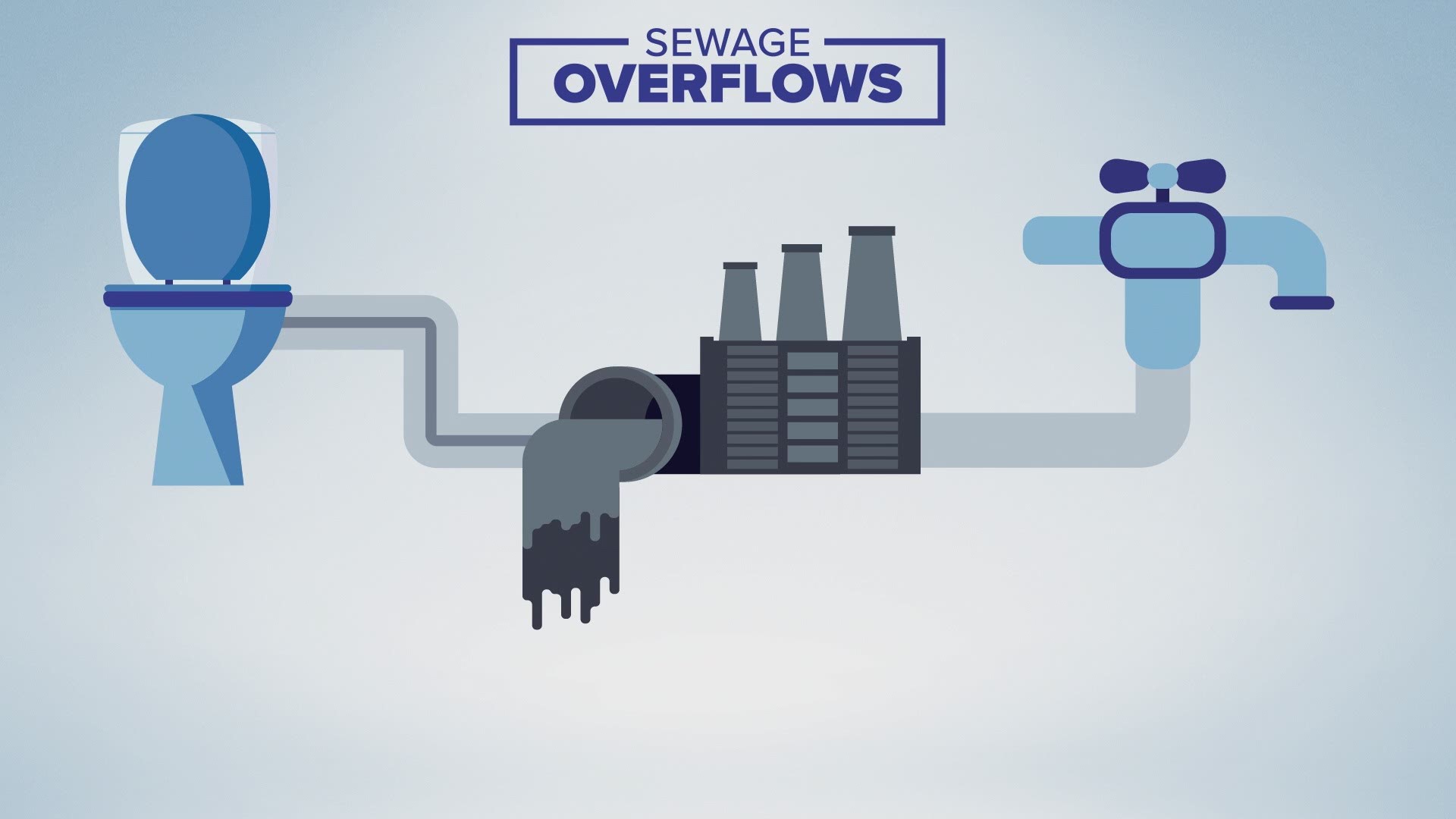2018 was a record year for rainfall in Dallas-Fort Worth.
It was also a record year, at least in recent memory, for sewage overflow: More than 119 million gallons of the sewage flowed into North Texas streets and bodies of water.
But how does a sewage overflow happen?
Watch the video above for a step-by-step breakdown of the process. Here's a synopsis of what goes wrong:
• When you flush a toilet, the water is supposed to flow through underground sewer lines to a wastewater treatment plant.
• From the treatment plant, all the nasty stuff is removed before eventually coming back out of your faucet (after going through a water treatment system).
• But if those underground sewage lines are not properly maintained, they develop cracks.
• When we get heavy downpours, the water sinks into the ground – through the cracks in the sewage lines – and floods the sewer line to its capacity.
• And because the rainwater, combined with sewage water, has nowhere else to go, it spews out of manholes, often creating a mess in the streets.

